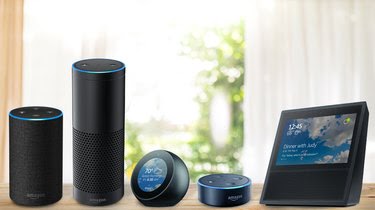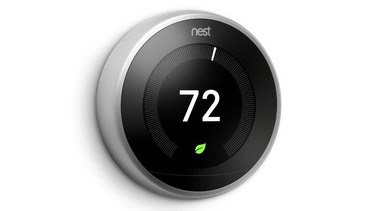Quck answer
To operate a Nest Thermostat through Amazon Alexa, you need to follow these steps:
1. Set up your Nest Thermostat and connect it to your Wi-Fi network.
2. Install the Nest app on your smartphone and link it to your Nest account.
3. Open the Amazon Alexa app and enable the Nest skill.
4. Sign in to your Nest account within the Alexa app.
5. Discover devices by saying “Alexa, discover my devices” or manually scan for devices in the Alexa app.
6. Once your Nest Thermostat is discovered, you can control it using voice commands such as “Alexa, set the temperature to 72 degrees” or “Alexa, increase the temperature by 2 degrees.”
By following these steps, you can seamlessly control your Nest Thermostat using Amazon Alexa, making it more convenient and efficient to manage your home’s temperature.
The Nest Learning Thermostat is part of a new generation of programmable thermostats that can be connected to your smartphone or tablet through Wi-Fi. This allows you to monitor and adjust the thermostat remotely. In addition to being programmable, the Nest Thermostat also learns from your temperature adjustments over time. After a few days of use, it will automatically make adjustments based on your preferences.
Setting Up Your Nest Thermostat
Once you have installed your Nest thermostat, you will need to download the Nest app on your phone or tablet. This app is used to register your device, establish ownership, and provide necessary information for the thermostat to function properly. By connecting your device to Wi-Fi and linking it to your smartphone or tablet, you can control your Nest Thermostat from anywhere. However, at this stage, you still need your phone or tablet to make adjustments. If you want to control it using voice commands, you will need a voice-activated control center like Amazon’s Echo with Alexa. Although Google, the owner of Nest, has its own voice control system called Google Home, Nest decided to support Amazon Alexa due to its popularity.

Alexa serves as the voice control interface for all Amazon Echo products.
Image Credit:
Image © PCMag.com
Introducing Alexa to Your Nest Thermostat
Alexa is the voice interface for Amazon’s Echo line of smart home assistants, including the Echo, Echo Dot, Echo Plus, Echo Show, and Echo Spot. All of these devices connect to Wi-Fi and can be set up using the Alexa app. They all have the capability to provide voice control over your Nest Learning Thermostat.
Alexa’s ability to connect with the Nest Thermostat and control it using voice commands is made possible through a device-specific application called a Skill. There are thousands of Skills available for Alexa, and they can be accessed through the Alexa app. To use a specific Skill, you just need to enable it within the app. The Skill for the Nest Thermostat can be found in the Smart Home Skills category.
How to Activate Alexa’s Nest Thermostat Skills
- Launch the Amazon Alexa app on your smartphone or tablet.
- Click on the menu button located in the corner.
- Choose “Smart Home” from the list in the menu.
- Select “Your Smart Home Skills” at the bottom of the Smart Home screen.
- Click on “Enable Smart Home Skills”.
- Locate “Nest Thermostat” in the Smart Home Skills.
- Activate Nest Thermostat.
- Enter your Nest account details to connect to your account.
- Say, “Alexa, discover my devices.” After approximately 10 seconds of scanning, your Nest Thermostat should appear among the Smart Home Devices in your Alexa app.
During the initial setup of your Nest Thermostat using the Nest app, you were instructed to assign a name to your thermostat, typically the name of the location where it is installed. It is unnecessary to include “thermostat” in the name. If your home has zone heating with multiple thermostats, using “thermostat” as part of the device name may cause confusion for Alexa.
What Commands Can You Use with a Thermostat?
Alexa understands a variety of commands, although they are not limitless. All commands are preceded by the “wake word“, which is “Alexa” by default. Here are some examples of commands you can use with the Nest Thermostat that Alexa will recognize:
- Alexa, what is the temperature in [thermostat name]?
- Alexa, set the temperature of [thermostat name] to ___ degrees.
- Alexa, decrease the temperature of [thermostat name]. (Nest will lower the temperature by 2 degrees Fahrenheit).
- Alexa, increase the temperature of [thermostat name]. (Nest will raise the temperature by 2 degrees Fahrenheit).
If you only have one Nest Thermostat in your home, there is no need to include the thermostat name in your Alexa commands.

IFTTT provides additional options for Alexa to control your Nest Thermostat.
Image Credit:
Image © PCMag.com
Controlling Your Nest Thermostat with IFTTT
There is another method to control your Nest Thermostat using voice commands through Alexa without using the Alexa app. It is called IFTTT, which stands for “If This, Then That.” IFTTT is a third-party utility that offers various simple trigger-and-effect commands known as “recipes” or “applets” for applications like Alexa. The IFTTT website contains many pre-made recipes that you can utilize, or you can create your own.
To use IFTTT recipes with Alexa, first visit the IFTTT website at https://IFTTT.com.
- Go to the Amazon Alexa Channel on IFTTT.
- If you already have an IFTTT account, sign in; if not, sign up for one.
- Establish a connection with the Alexa Channel.
- Sign in to your Amazon account.
- Grant IFTTT permission to connect with your Amazon account by clicking OK.
- Now you can utilize Alexa-enabled recipes on IFTTT.
- Look through the list of recipes and click on the one you like.
- Enable the recipe by clicking “Turn On”.
- You may also need to give IFTTT permission to connect with the Nest.
Both the Amazon Echo with Alexa and Nest Learning Thermostat are not the only products in their category available in the market, but they are highly prominent and popular. Both devices have undergone significant improvements over the years and have attained a high level of sophistication. They are well-supported and seamlessly communicate with each other.

